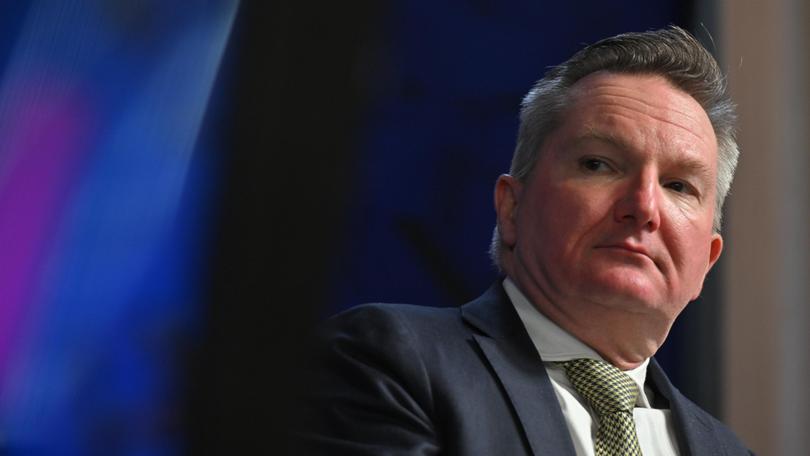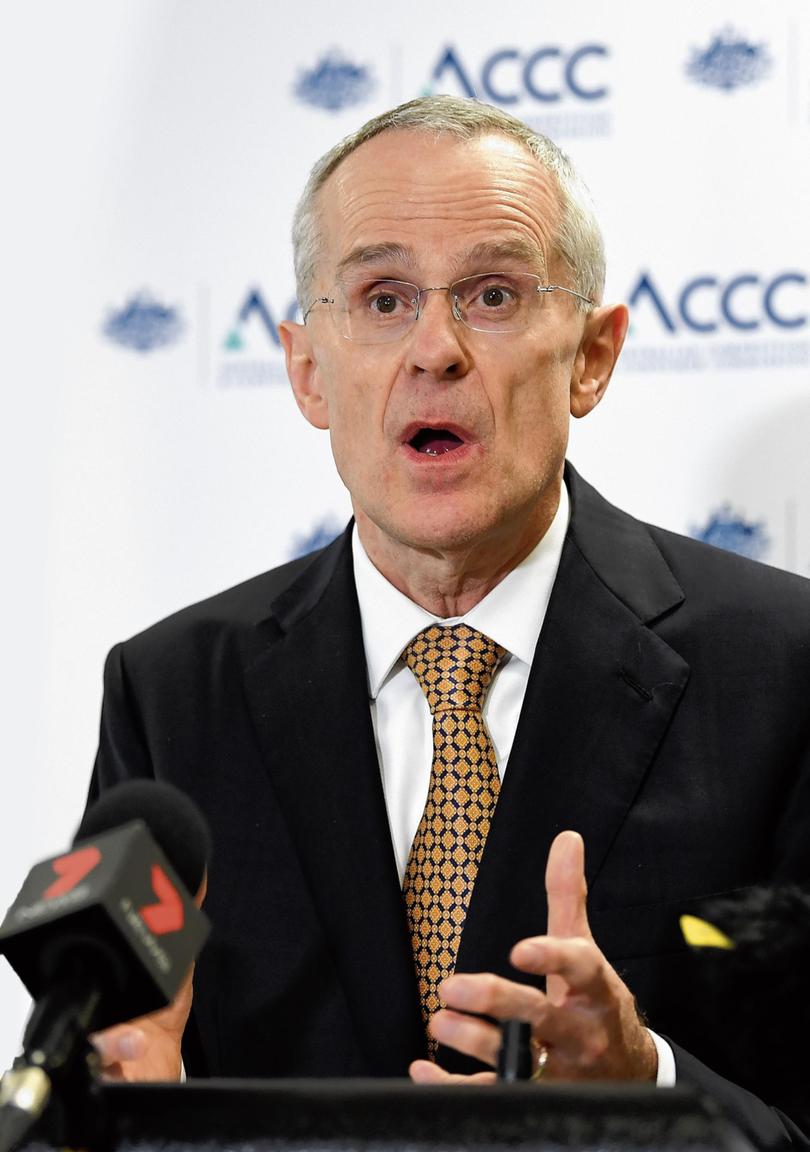Paul Murray: Energy Minister Chris Bowen’s dismissal of nuclear in favour of renewables is a costly mistake

How is it that the brightest people in the world are opting for nuclear power, but Labor in Australia keeps telling us it’s a bad idea?
The world’s most credible tech entrepreneurs are choosing nuclear reactors to provide the huge amounts of reliable electricity needed for their next big thing — the artificial intelligence revolution.
Google last month signed up with US Department of Energy-backed Kairos Power, which will build small modular reactors to deliver 500MW between 2030 and 2035, meeting the tech giant’s expanding demands.
Sign up to The Nightly's newsletters.
Get the first look at the digital newspaper, curated daily stories and breaking headlines delivered to your inbox.
By continuing you agree to our Terms and Privacy Policy.Which damns Labor’s lie that nuclear can’t play a role in Australia reaching net zero carbon emissions by 2050.
“We believe that nuclear energy has a critical role to play in supporting our clean growth and helping to deliver on the progress of AI,” Google’s senior director for energy and climate, Michael Terrell, said.
That quote was part of a report by CNBC noting tech sector leaders Bill Gates, Sam Altman and Jeff Bezos all back nuclear.
“Constellation Energy is restarting Three Mile Island to power Microsoft data centres, while Amazon bought a data centre from Talen Energy that’s powered by the Susquehanna nuclear power plant,” CNBC reported.
But here in Australia we’re left with Energy Minister Chris Bowen fixated on unreliable renewables while blathering that the wind and the sun don’t “send a bill”.
That was his vacuous answer to an equally vacuous question by Sydney Morning Herald columnist Peter FitzSimons in September about “where we’re up to on your Government’s promise of a $275 annual reduction of our power bills?”
“The sun doesn’t send a bill,” Bowen responded. “The wind doesn’t send a bill.”
The attempted deception that those power sources are free is separate to Bowen’s political ruse of approaching the transition from fossil fuels as a contest between renewables and nuclear.

One writer this week claimed 666GW of renewable power is being installed globally compared with only 29GW of nuclear power over the next two years, as if it proved something.
“With leadership and political will, the installation of cost-effective renewables with storage will make expensive nuclear power not only unattractive, but also unnecessary,” the letter stated.
Such views ignore that power from batteries is unable to physically meet the huge shortfalls in unreliable and intermittent solar and wind production for big energy systems, which is why the tech giants are going nuclear.
And that when properly assessed against finite lifecycles of 20 years, in contrast to 60-plus for a nuclear reactor, battery energy is more expensive.
However, this should not be framed as a fight between renewables and nuclear, which plays out dishonestly as green virtue versus radioactive peril.
For the guaranteed electricity supply it can never provide, even with batteries, the renewables revolution needs nuclear power to succeed.
The sooner devotees of renewables grasp that irresistible truth, the sooner we can adopt a workable solution on replacing fossil fuels.
This week the Albanese Government turned its back on an offer by our AUKUS partners to be part of the next phase of the Generation IV International Forum — which Australia joined in 2017 — to fast-track the development of nuclear technologies to cut emissions and shore up energy security.
The reasoning given by Bowen for our rejection is truly idiotic: we don’t have a domestic nuclear energy industry.
“Nuclear power is outlawed in Australia,” the minister’s office said. “Our international partners understand that Australia’s abundance of renewable energy resources makes nuclear power, including nuclear power through small modular reactors, an unviable option for inclusion in our energy mix for decarbonisation efforts.”
That’s not true. What the US and UK understood was that we would continue exploring the nuclear path. Domestic politics determined Labor’s embarrassing exit from an important international commitment.
The idea that Australia can run eight nuclear-powered submarines from the early 2040s without developing a domestic nuclear energy capability is simply ludicrous.
Labor is spending $150 million to “start delivering the skills and workforce we need to deliver Australia’s nuclear-powered submarine program through AUKUS” while pretending before a looming Federal election that we won’t need to develop a nuclear energy industry. Moronic.
Besides which, the Government already runs a small reactor on which a sophisticated nuclear medicines industry and research organisation is based.
Opposition Leader Peter Dutton appeared “crazy brave” when he released the Coalition’s plan to build seven nuclear reactors across the nation to fill the emerging supply gaps as coal-fired power stations close.
However, the closer we get to the election, the more it appears that Labor will get wedged on the comparisons between its renewables transition plan and national energy security.
Last week, well-respected consultancy Frontier Economics — which has advised governments of both political persuasions – released the first of two reports on nuclear power.
“The work presented in this report and our second report is funded and directed solely by Frontier Economics,” it says. “We have consulted with the Federal Coalition through the course of this work to determine more details about their plans to help clarify how we could model the inclusion of nuclear power in the national electricity market.
“We have decided to do this work because of the large amount of ill-informed and misleading cost comparisons being publicly made about nuclear power and we feel Australia deserves better quality analysis and commentary on this important issue.”
Sims had fallen for the trap of believing that renewables produce reliably at their ‘nameplate’ capacity, which wildly understates the true cost of the power they provide.
In clarifying the economics driving the Coalition’s nuclear policy, Frontier nailed some of the fantasy behind Labor’s renewables transition by isolating the true costs and risks the Albanese Government never wants to talk about.
In establishing a “base case” for the transition to renewables without a nuclear back-up, Frontier established that Labor’s system, relying only on wind, solar and energy storage, had not included transmission costs of $62b, which the Coalition plan avoids by using existing infrastructure around coal-fired plants.
That led Frontier to conservatively estimate the cost of the renewables plan being pursued by the Albanese Government at $642b.
Shadow energy minister Ted O’Brien immediately pointed out that this was five times more than Labor had told Australians its policy would cost.
In developing a base renewables case for eventual direct comparison with nuclear, Frontier shredded an analysis from the former head of the Australian Competition and Consumer Commission, Rod Sims.
“All studies show that renewable energy is cheaper for Australia than nuclear,” Sims wrote. “Solar and wind can supply power at about $60-80 a megawatt hour, and much cheaper than this in some areas.
“When this is firmed so that we have 24/7 reliable electricity using pumped hydro, batteries or gas-fired peaking generation, the cost rises to about $110MWh, including additional transmission costs.”
Sims then claimed modern nuclear plants produced “at $200-$300MWh, at best, based on running 90 per cent of the time, and that is in countries that already have well established nuclear power industries”.
Unfortunately, Sims had fallen for the trap of believing that renewables produce reliably at their “nameplate” capacity, which wildly understates the true cost of the power they provide.
“There is a lot wrong with Sims’ claims,” Frontier said. “Firstly, wind and solar power only operates about a third of the time — as compared to nuclear which produces electricity more or less continually.

“And the pattern of renewable generators are generally correlated — that is, they tend to operate or not operate at the same time.
“This means that for renewables to generate sufficient electricity to meet demand at all times, a lot more renewable capacity is required to generate surplus electricity for times when renewables don’t operate, and then this surplus has to be stored and also require further backups to cover when there are longer term wind and solar droughts.
“In rough terms, about three times as much renewable capacity is required to produce the same quantity of electricity as a nuclear generator.
“It is therefore misleading to compare the capital and operating costs of renewables per megawatt hour with the capital and operating costs per megawatt hour of a nuclear power plant, even if this includes a crude attempt to add in the cost of ‘firming’.
“A more sophisticated approach is necessary to make a valid cost comparison. The reality is that electricity consumers are supplied by a wide range of electricity supply options, which are often operating at the same time.
“In this case it is only valid to compare the total costs of the combination of generators — whether it be the renewable system promoted by AEMO or one that also includes nuclear — required to reliably and securely meet demand.”
Some people will find this debate eye-glazing. Unfortunately, the future of our energy-dependent society hinges on it.
Frontier’s second report evaluating the potential of nuclear energy in Australia — due in the next few weeks — will supplant Bowen’s bluster with the factual basis for a real election fight.
